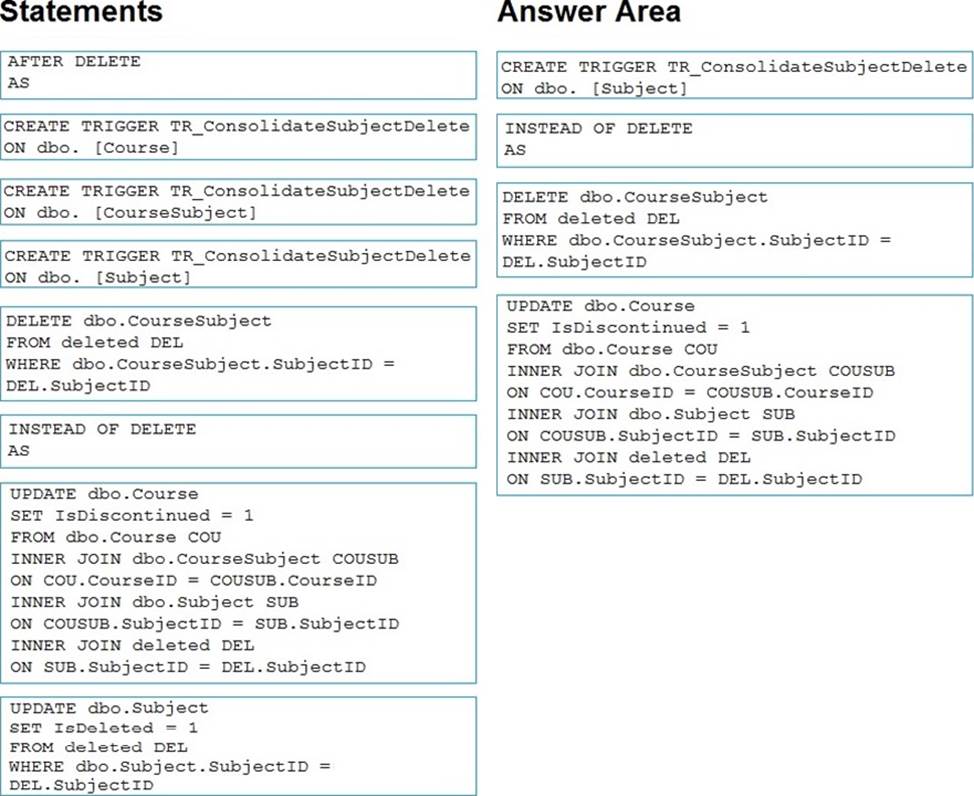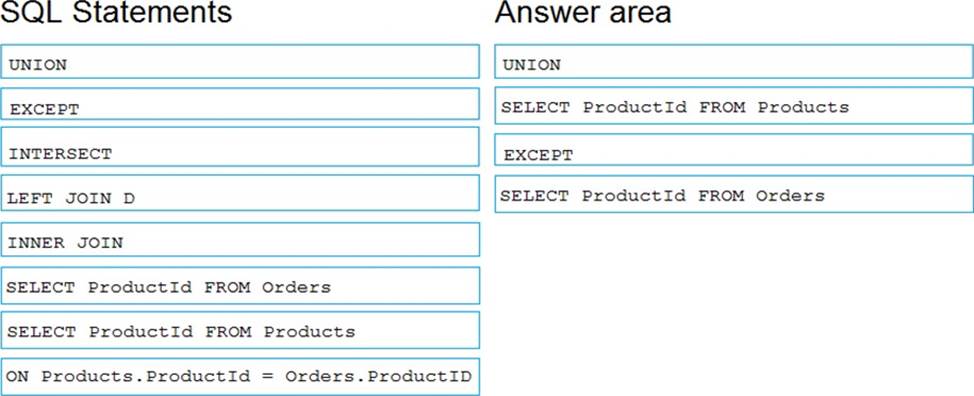Microsoft 70-461 Querying Microsoft SQL Server 2012 Online Training
Microsoft 70-461 Online Training
The questions for 70-461 were last updated at Oct 30,2025.
- Exam Code: 70-461
- Exam Name: Querying Microsoft SQL Server 2012
- Certification Provider: Microsoft
- Latest update: Oct 30,2025
DRAG DROP
You are a Microsoft SQL Server client tools to develop a Microsoft Azure SQL Database database that supports an e-learning application.
The database consists of a Course table, a Subject table, and a CourseSubject table as shown in the exhibit. (Click the Exhibit button.)
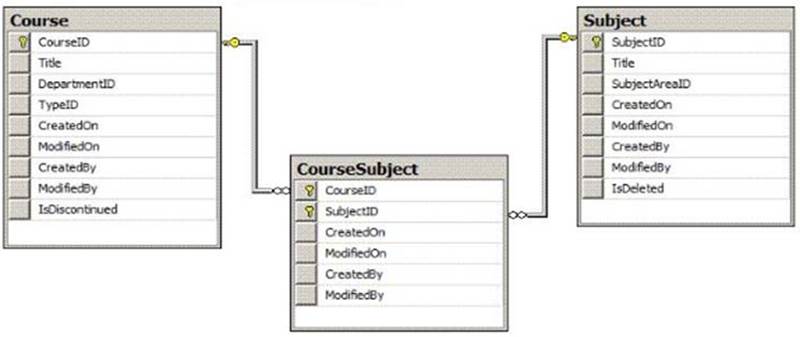
You need to write a trigger that meets the following requirements: Subjects are not physically deleted, but are marked as deleted. When a subject is deleted, the courses that offer that subject are marked as discontinued.
Which four Transact-SQL segments should you use to develop the solution? To answer, move the
appropriate Transact-SQL segments from the list of Transact-SQL segments to the answer area
and arrange them in the correct order.
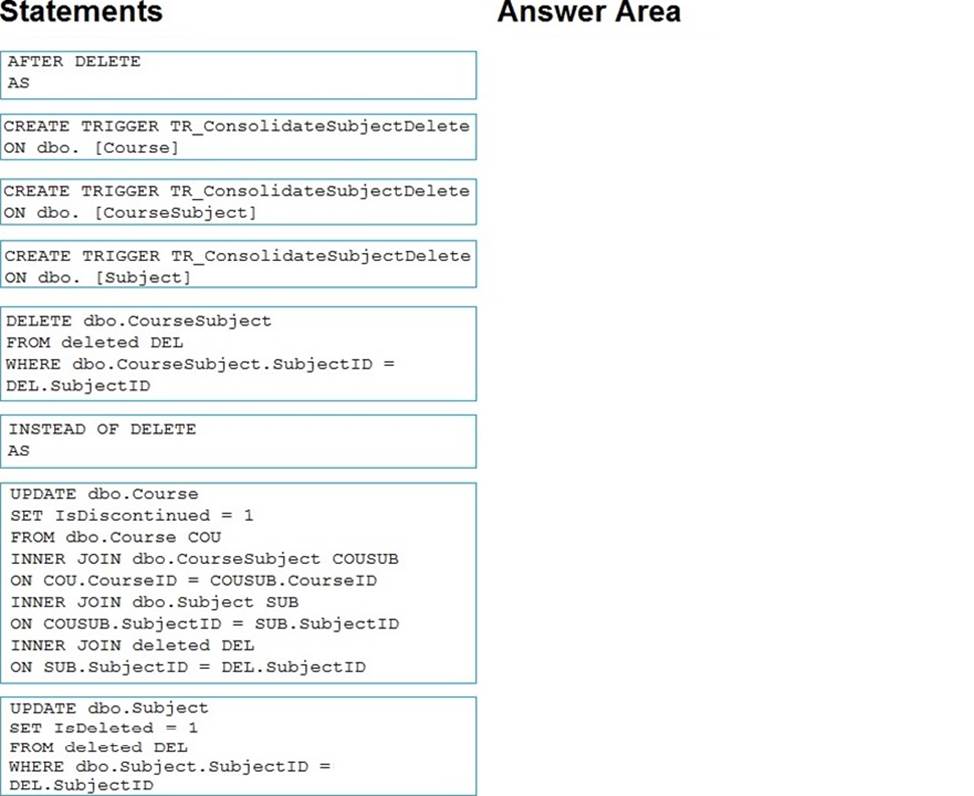
DRAG DROP
A database contains tables as shown in the exhibit. (Click the Exhibit button.)
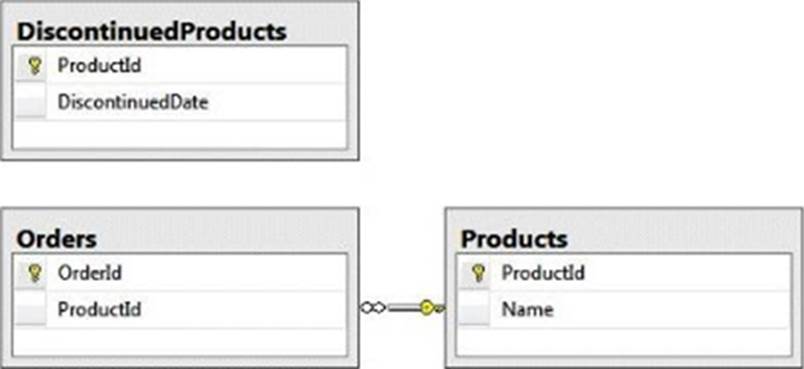
Products that are discontinued are moved from the Products table to the DiscontinuedProducts table. Any orders for discontinued products are removed from the Orders table. You write the following SELECT statement to return all the discontinued products: SELECT ProductId FROM DiscontinuedProducts You need to extend the SELECT statement to include products who do not have any orders.
Which four Transact-SQL segments should you use to develop the solution? To answer, move the
appropriate Transact-SQL segments from the list of Transact-SQL segments to the answer area and arrange them in the correct order.
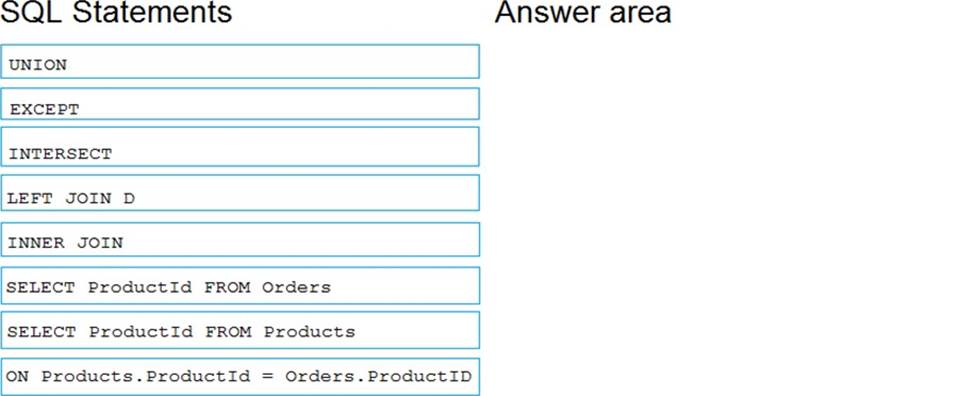
You are working with a table that has an XML column that contains information about books. Each
book may have an associated price.
You need to write with a query that returns the price of each book as a non-xml value.
Which XML method should you use?
- A . Exist()
- B . Nodes()
- C . Query()
- D . Value()
You develop a Microsoft SQL Server 2012 server database that supports an application. The application contains a table that has the following definition:
CREATE TABLE Inventory
(ItemID int NOT NULL PRIMARY KEY,
ItemsInStore int NOT NULL,
ItemsInWarehouse int NOT NULL)
You need to create a computed column that returns the sum total of the ItemsInStore and ItemsInWarehouse values for each row.
Which Transact-SQL statement should you use?
- A . ALTER TABLE Inventory
ADD TotalItems AS ItemsInStore + ItemsInWarehouse - B . ALTER TABLE Inventory
ADD ItemsInStore – ItemsInWarehouse = TotalItemss - C . ALTER TABLE Inventory
ADD TotalItems = ItemsInStore + ItemsInWarehouse - D . ALTER TABLE Inventory
ADD TotalItems AS SUM(ItemsInStore, ItemsInWarehouse);
You develop a Microsoft SQL Server 2012 database.
You create a view from the Orders and OrderDetails tables by using the following definition.
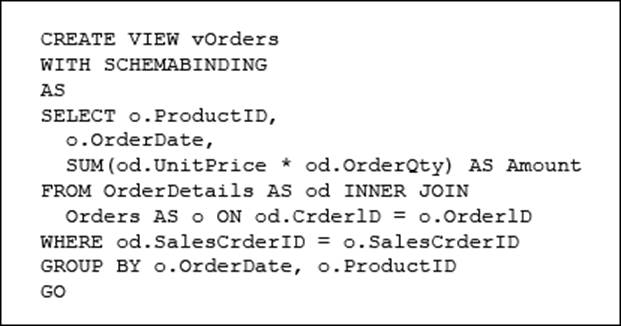
You need to improve the performance of the view by persisting data to disk.
What should you do?
- A . Create an INSTEAD OF trigger on the view.
- B . Create an AFTER trigger on the view.
- C . Modify the view to use the WITH VIEW_METADATA clause.
- D . Create a clustered index on the view.
You develop a database for a travel application. You need to design tables and other database objects.
You create the Airline_Schedules table.
You need to store the departure and arrival dates and times of flights along with time zone information.
What should you do?
- A . Use the CAST function.
- B . Use the DATE data type.
- C . Use the FORMAT function.
- D . Use an appropriate collation.
- E . Use a user-defined table type.
- F . Use the VARBINARY data type.
- G . Use the DATETIME data type.
- H . Use the DATETIME2 data type.
- I . Use the DATETIMEOFFSET data type.
- J . Use the TODATETIMEOFFSET function.
You develop a database for a travel application. You need to design tables and other database objects. You create a stored procedure. You need to supply the stored procedure with multiple event names and their dates as parameters.
What should you do?
- A . Use the CAST function.
- B . Use the DATE data type.
- C . Use the FORMAT function.
- D . Use an appropriate collation.
- E . Use a user-defined table type.
- F . Use the VARBINARY data type.
- G . Use the DATETIME data type.
- H . Use the DATETIME2 data type.
- I . Use the DATETIMEOFFSET data type.
- J . Use the TODATETIMEOFFSET function.
CORRECT TEXT
You have a view that was created by using the following code:
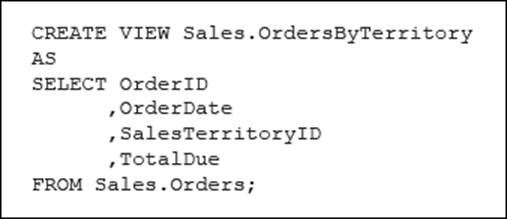
You need to create an inline table-valued function named Sales.fn_OrdersByTerritory, which must meet the following requirements:
• Accept the @T integer parameter.
• Use one-part names to reference columns.
• Filter the query results by SalesTerritoryID.
• Return the columns in the same order as the order used in OrdersByTerritoryView.
Which code segment should you use? To answer, type the correct code in the answer area.
CORRECT TEXT
You have a database that contains the tables shown in the exhibit. (Click the Exhibit button.)
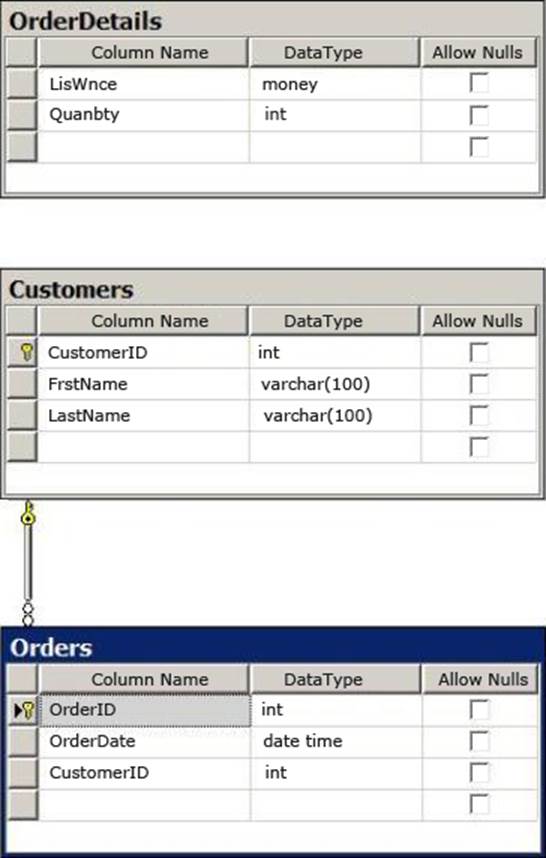
You deploy a new server that has SQL Server 2012 installed.
You need to create a table named Sales.OrderDetails on the new server. Sales.OrderDetails must meet the following requirements:
• Write the results to a disk.
• Contain a new column named LineItemTotal that stores the product of ListPrice and Quantity for each row.
• The code must NOT use any object delimiters.
The solution must ensure that LineItemTotal is stored as the last column in the table.
Which code segment should you use? To answer, type the correct code in the answer area.
CORRECT TEXT
You have a database that contains the tables shown in the exhibit. (Click the Exhibit button.)
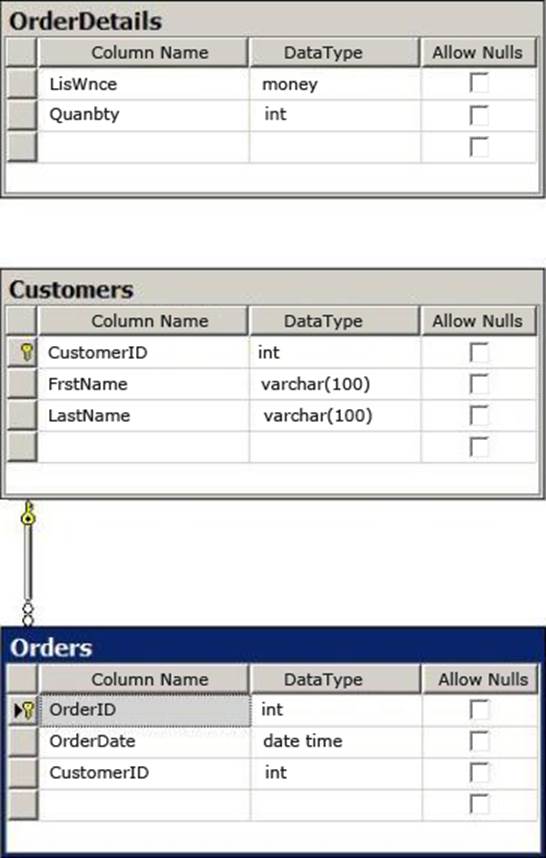
You need to create a view named uv_CustomerFullName to meet the following requirements:
• The code must NOT include object delimiters.
• The view must be created in the Sales schema.
• Columns must only be referenced by using one-part names.
• The view must return the first name and the last name of all customers.
• The view must prevent the underlying structure of the customer table from being changed.
• The view must be able to resolve all referenced objects, regardless of the user’s default schema.
Which code segment should you use? To answer, type the correct code in the answer area.
Latest 70-461 Dumps Valid Version with 232 Q&As
Latest And Valid Q&A | Instant Download | Once Fail, Full Refund

